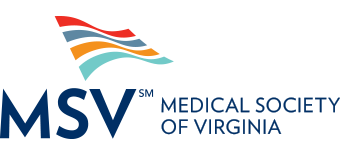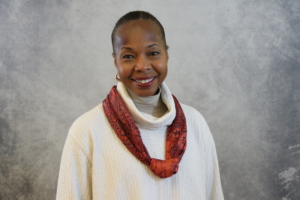SafeHaven Provides Safe Space to Discuss Concerns Without Fear of Repercussions
As burnout in the medical profession is at an all-time high and the well-being of physicians, PAs and health practitioners has become a national concern, a program established in Virginia is launching across the country.
SafeHaven, created by the Medical Society of Virginia, is a confidential resource that provides physicians, residents, PAs, nurses, pharmacists and their families a safe space to address burnout, career fatigue and mental health concerns without the fear of repercussions to their medical license and professional reputation.
Launched in 2020 in Virginia, the program has expanded through a pilot period to Illinois, Michigan and Minnesota. Thanks to a grant from the Physicians Foundation, the Medical Society of Virginia (MSV) is working with a cohort of five states – Arizona, Georgia, Indiana, Montana and Pennsylvania – on legislative efforts to begin offering burnout and mental health resources to health practitioners as part of SafeHaven’s national expansion.
“For far too long, the medical profession has endured a stigma for simply admitting there are times – just like for the rest of us – when they need assistance or care,” said Melina Davis, CEO and executive vice president of the Medical Society of Virginia. “We’ve created a program that not only equips our health professionals with resources for issues like burnout and mental health, but also encourages them that it’s OK to seek the help they need. It’s past time that we provide those who take care of us with resources to take care of themselves.”
Dr. Russell Libby, a board member of the Physicians Foundation said: “SafeHaven transforms the landscape of how clinicians can access behavioral health resources and support. This means that more clinicians will get the help they need when they need it. It will help sustain and grow our healthcare workforce, reinforce their enthusiasm and increase access to care and better patient outcomes.”
In the latest survey about burnout conducted by the American Medical Association (AMA), the Mayo Clinic, Stanford University School of Medicine and the University of Colorado School of Medicine, 63% of physicians reported at least one manifestation of burnout in 2021, an all-time high. The Medscape Physician Burnout & Depression Report 2023 showed a rate of burnout of 53% in 2022, a 26% increase since 2018.
Similarly, the Journal of the American Medical Association (JAMA) reported in 2022 a burnout rate of 49% – including 60% in 2021 – over a three-year window (2019-21). It estimates the annual cost of burnout-related physician turnover to be about $5 billion.
“It’s clear that our healthcare professionals, from doctors and nurses to pharmacists and lab technicians, are overwhelmed,” said Dr. John Whyte, chief medical officer of WebMD. “What’s also clear is that our healthcare professionals are choosing to leave their professions at alarming rates, in part because we’ve failed to appropriately address their needs. SafeHaven embraces the healthcare community, welcoming those who need support and providing them the level of care they deserve.”
MSV pushed for legislation to address physician burnout, fatigue and mental health issues during Viginia’s 2020 General Assembly session. The House and Senate bills for the creation of the SafeHaven program passed unanimously and became law on March 8, 2020. MSV began offering the suite of services to Virginia physicians in July of 2020.
“Demand was intense,” Davis said. “Based on the response we saw in Virginia, we knew SafeHaven would benefit healthcare professionals throughout the country.”
In addition to Virginia, SafeHaven services are available in Illinois, Michigan and Minnesota. In all, more than 6,500 clinicians have participated in the SafeHaven program, and national associations including the American Society of Clinical Oncology (ASCO) have begun offering the solution to their members.
Since its inception, SafeHaven has had a 47% engagement rate, a rate that far exceeds traditional employee assistance programs.
“We wouldn’t tell our patients they can handle their mental health concerns on their own, yet that’s exactly what many healthcare professionals try to do,” said Dr. Sterling Ransone Jr., board chair and former president of the American Academy of Family Physicians. “Traditionally, we’ve put physicians in a no-win situation where they feel they can’t share their feelings of depression, anxiety or stress without retribution. With SafeHaven, the stigma of physicians being honest with themselves is removed.”
SafeHaven offers assistance through VITAL WorkLife’s Clinician Well-Being Resources, a comprehensive solution that includes peer coaching, counseling sessions for the physician and their family, leadership development and work-life balance resources to support well-being for physicians, PAs, nurses, pharmacists and medical, nursing, PA and pharmacy students.
“Through our program, we are challenging the historic culture of medicine, working to decrease traditional control elements,” Davis said. “We also are working to add more innovative services as we learn more about the needs of our clinicians.
“Most important, we think that normalizing this ongoing concern is one of the most important things we can do. It’s OK for health professionals to say they’re not OK.”
* * *
About SafeHaven
SafeHaven, the first of its kind in the nation, was founded in 2020 after recognizing a greater need to provide physicians and PAs the support they need to stay well and prevent burnout. As of 2021, the SafeHaven resources have been expanded to include nurses and pharmacists as well as medical, nursing, PA and pharmacy students. To learn more, visit www.SafeHavenHealth.org.

 Alice Coombs, MD, MPA, FCCP of Richmond, Virginia was installed as the fourth female and first black president of the Medical Society of Virginia (MSV) at the organization’s Annual Meeting on October 14, 2023, at Hilton Norfolk The Main. Dr. Coombs is a Board-certified Critical Care Specialist, Anesthesiologist, and Internist. She has been actively practicing medicine for more than 35 years in both Private and Academic settings.
Alice Coombs, MD, MPA, FCCP of Richmond, Virginia was installed as the fourth female and first black president of the Medical Society of Virginia (MSV) at the organization’s Annual Meeting on October 14, 2023, at Hilton Norfolk The Main. Dr. Coombs is a Board-certified Critical Care Specialist, Anesthesiologist, and Internist. She has been actively practicing medicine for more than 35 years in both Private and Academic settings.
